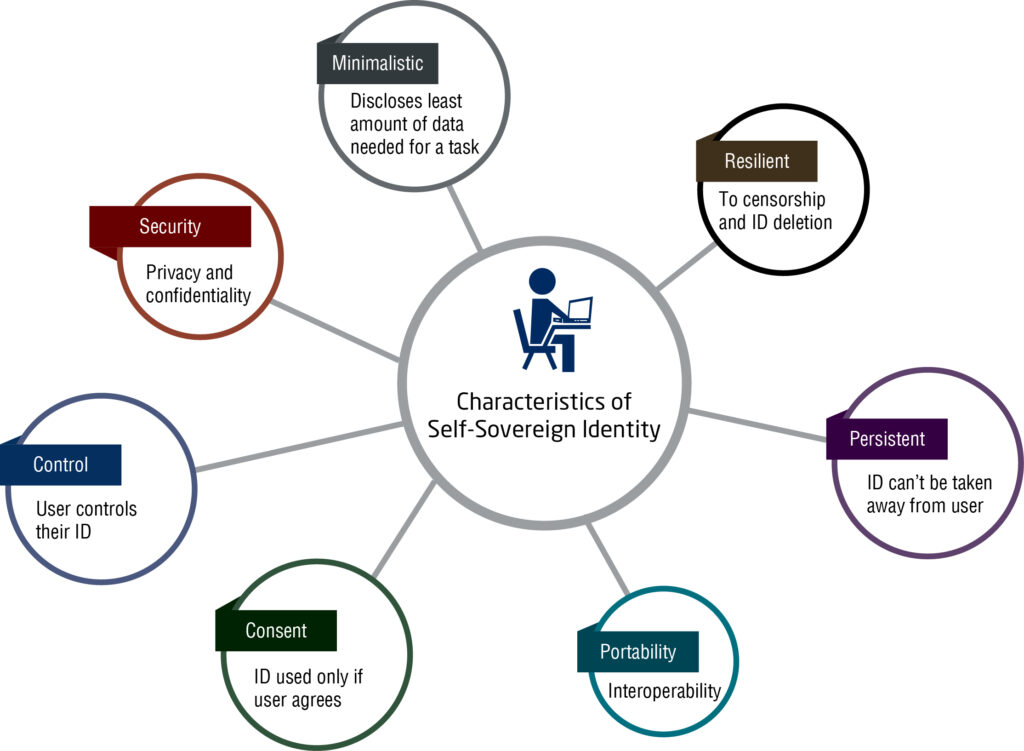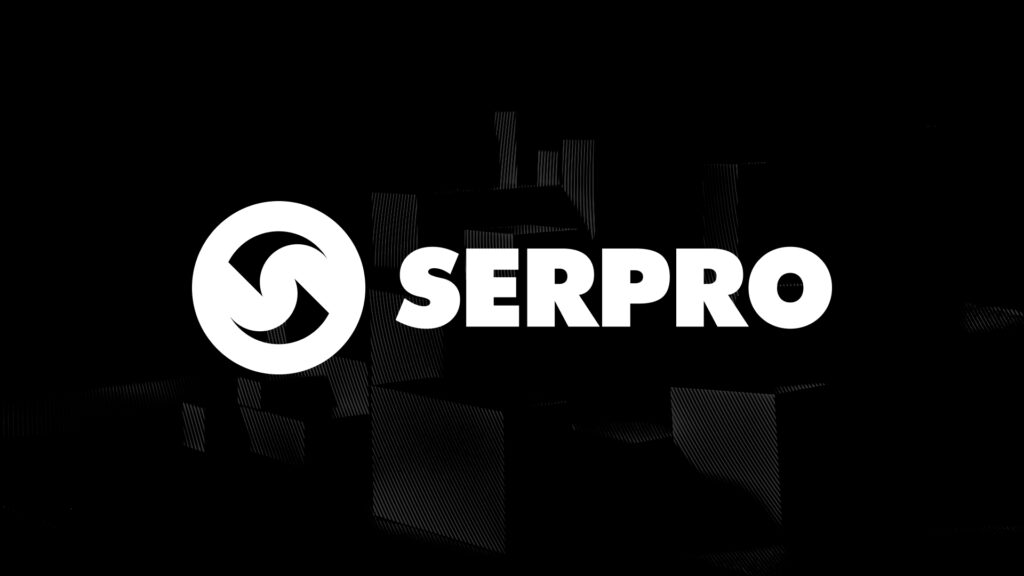- According to Brazil’s official reports, the new blockchain-based digital ID will be a test run.
- India recently launched a Polygon-based identity system for verifiable certificates on behalf of the government of Maharashtra.
- The blockchain identity management market is estimated to reach $3.58 billion by 2025.
In under two decades, blockchain technology has attained feats that many of its predecessors have failed. Since the dawn of Bitcoin, the first successful web3 application, developers have strived to create the “next big hit”. Years of experimentation and innovations have significantly expanded the horizon of the entire industry. Today, blockchain technology is used in logistics, finances, governance protocols, medical technology, and agriculture. Its flexibility, immutability, and innovation have led to the emergence of multiple industries.
For instance, the fintech industry is among the most successful exploits blockchain developers have undertaken. Its approach towards digital assets has led to the creation of an entirely new financial system that threatens the very existence of banks. Its numerous success stories have placed the web3 franchise at the top of the fourth industrial revolution. Despite this, its most significant achievement is not redefining multiple industries or creating a trillion-dollar industry(cryptocurrency), it’s achieving the one thing Web2 failed at, digital ownership.
Indeed, due to this achievement, blockchain technology solidified its future as the next evolution of technology. Through these governments, organizations and institutes have utilized this feature to develop blockchain-based Identification systems(ID). In recent news, Brazil became the latest adopter of web3 as its government officially introduced a new blockchain-based digital ID, replacing its standard national ID system.
Understanding the basics of digital IDs.
When Web2 officially became mainstream, the entire globe experienced a radicalization known as the digital era. The internet introduced new concepts that interconnected multiple parts of the world. Soon, organizations, corporations, and governments adopted new digital management systems to keep up with the changing times. This led to the widespread of centralized digital systems.
With databases growing and constantly expanding, we required a new form of management, a centralized identity management system. Generally, a standard identity system accounts for users who utilize any resources in an organization. Compared to the traditional paper systems, the centralized identity system significantly overhauled progress since it made managing an entire corporation easier.
Also, Read NFT National Identification System: The next step for Africa’s NFT Marketplace.
This led to digital identities later branching out and forming the basis of Social Media platforms. Generally, a digital identity is the total information about an organization or an individual existing on the internet. This marked one of the peak moments of web2, but unfortunately, the centralized identity system contained many flaws.
Data loss through hacking or equipment damage occurred more often. In addition, since organizations centrally controlled digital identities, privacy infringement was a daily occurrence. Thus, when blockchain technology gained recognition, it mitigated many issues central digital identity systems had.
Blockchain-based digital identity
Web3 application soon rose to fame due to its numerous advantages. Its immutability, anonymity, and, more importantly, integrity soon gained the attention of many developers. Thus, when developers achieved digital ownership through NFT, it marked one of its most significant achievements. In a nutshell, digital ownership is the possession of a digital asset comprising a document, music, e-book, or any digital collectible.
Many Web2 platforms have promised this same achievement, but unfortunately, these claims are mainly upsold to attract more users. Due to its centralized systems, most Web2 platforms had the means to track and even erase or use an individual’s information without them knowing. Web3 application, on the other hand, provided a new paradigm for establishing, tracking, and verifying digital ownership without a central authority.

Blockchain-based digital identities provide better functionalities compared to standard national identification systems.[Photo/UseTheBitcoin]
At its core, digital ownership is achieved through digital assets tokenization. One of the fundamental aspects of blockchain technology is its ability to function and make decisions based on set rules and rights. Thus, through tokenization, digital assets are permanently marked with instructions that only the owner can alter.
In addition, digital ownership is possible through a cryptographic signature, requiring a specific or private key to unlock. Any change in the system is recorded and made available to all users. For this reason, any form of fraudulent activity is nearly impossible.
Applying this basic principle in national identification systems will create an immutable blockchain-based digital ID system.
Brazil Introduces new Blockchain-based digital ID
As mentioned, when utilizing the core components of web3 applications, developers and the government have created an immutable blockchain-based digital ID. It contains numerous advantages, like traceability and prevention of any form of identity theft.
The latter is possible due to the unique nature of a cryptographic signature on each digital ID. Remember, standard cryptographic signatures can represent more than 12 figures. This means there is no fear of ever running out of new identities. Furthermore, its decentralized network allows near-instant retrieval of information, quickening most governmental processes.
Also, Read Blockchain-based technology takes root in African governments.
These factors are a few reasons why Brazil became the latest government to adopt this web3 application. According to Brazil’s official reports, the new blockchain-based digital ID will be a test run, to ultimately replace their standard National identification system. The Brazilian government intends to issue identification documents on-chain through a private blockchain in Rio de Janeiro, Goiás, and Paraná.

Brazil’s national data processing firm, Serpro, created the nation’s newest web3 application.[Photo/Medium]
Serpro, Brazil’s national data processing service, created this new web3 application and will issue identity documents by November 6th. Alexandre Amorim, president of Serpro, stated that the immutability and decentralization of blockchain were vital features to realize the country’s new national identification system. He said, “Blockchain technology plays a critical role in protecting personal data and preventing fraud, offering a more secure digital experience for Brazilian citizens. Utilizing the b-Cadastros blockchain platform significantly enhances the security and reliability of the National Identity Card project.“
Brazil’s new blockchain-based digital identity system signifies a complete change in its operations. Its decentralized nature and tracking capabilities will render fraudulent activities almost obsolete. In addition, the tracking mechanism will aid the government in its attempt to stop organized crime and identify drug lords within the country.
Its latest system aligns with Brazil’s agenda to unify identity issuance across its 30 states. Furthermore, since it is a web3 application, any external breach into the network is almost impossible. This will allow the Federal Revenue and governmental departments to exchange information without any worry of infiltrations.
Aside from embracing this digital ownership, its government has also hinted at the likelihood of a Central Bank Digital Currency. The government stated in August, clarifying that Drex is rebranding its pending CDBC. Drex is a well-known blockchain developer, and its incorporation will allow the government to freeze funds or reduce balances if deemed necessary.
Alternative Blockchain-based digital ID systems
As earlier mentioned, due to digital ownership, plenty of governments and organizations have reached out to web3 companies to develop blockchain-based digital ID systems. Analysts estimate the blockchain identity management market to reach $3.58 billion by 2025. Its high performance and reliability have attracted plenty of attention. For instance, India recently launched a Polygon-based identity system for verifiable certificates on behalf of the government of Maharashtra.
According to Shubham Gupta, an Indian Administrative Services Officer, blockchain-based digital identities offer so much potential beyond serving as a national identification system. He said, “If identity management systems have to be rated on a scale of 0 to 1 based on decentralization and individual control, traditional centralized ID systems will be on the far left and fully self-hosted, public blockchain-based IDs on the extreme right.“
BurstIQ, a renowned healthcare data company, recently adopted one of Dock’s technologies to introduce a blockchain-based ID system in healthcare. Through this system, acquiring confidential records without infringing on privacy became easier for its clients. In addition, doctors, laboratories, hospitals, and other healthcare providers can securely transfer confidential information promptly and securely.
Also, Read Filtering the Noise: Facts about the controversial Worldcoin project.
Buenos Aires in Argentina also recently introduced a new blockchain-based digital identity system with Matter Lab’s zkSync Era. According to the documentation, Argentina had set its sites on improving its national identification systems with web3 applications.
This program based on a decentralized digital identity protocol, QuarkID, introduced the new system. QuarkID user will fully own and manage their data. Diego Fernandez, secretary of innovation, said, “With this development, Buenos Aires becomes the first city in Latin America, and one of the first in the world, to integrate and promote this new technology and set the standard for how other countries in the region should use blockchain technology for their people.”
- SEO Powered Content & PR Distribution. Get Amplified Today.
- PlatoData.Network Vertical Generative Ai. Empower Yourself. Access Here.
- PlatoAiStream. Web3 Intelligence. Knowledge Amplified. Access Here.
- PlatoESG. Carbon, CleanTech, Energy, Environment, Solar, Waste Management. Access Here.
- PlatoHealth. Biotech and Clinical Trials Intelligence. Access Here.
- Source: https://web3africa.news/2023/10/04/news/blockchain-based-digital-id-to-replace-standard-identification-systems/
- :has
- :is
- :not
- $3
- $UP
- 1
- 12
- 2025
- 30
- 33
- 6th
- a
- ability
- About
- According
- Accounts
- achieved
- achievement
- achievements
- achieving
- acquiring
- across
- activities
- activity
- addition
- administrative
- adopt
- adopted
- advantages
- African
- agenda
- agriculture
- Aid
- Aligns
- All
- allow
- allows
- almost
- also
- america
- among
- an
- Analysts
- and
- Anonymity
- any
- Application
- applications
- approach
- ARE
- Argentina
- AS
- aspects
- asset
- Assets
- At
- attained
- attempt
- attention
- attract
- attracted
- AUGUST
- authority
- available
- balances
- Bank
- Banks
- based
- basic
- Basics
- basis
- BE
- became
- becomes
- behalf
- Better
- Beyond
- Big
- Billion
- Bitcoin
- blockchain
- Blockchain Developer
- blockchain platform
- blockchain technology
- blockchain-based
- Brazil
- Brazilian
- breach
- Buenos Aires
- but
- by
- CAN
- capabilities
- card
- central
- central authority
- Central Bank
- central bank digital currency
- centralized
- centralized systems
- certificates
- change
- changing
- Citizens
- City
- claims
- clients
- Collectible
- Companies
- company
- compared
- complete
- components
- comprising
- concepts
- constantly
- contained
- contains
- control
- controlled
- controversial
- Core
- CORPORATION
- Corporations
- countries
- country
- country’s
- create
- created
- Creating
- creation
- Crime
- critical
- cryptocurrency
- cryptographic
- Cryptopolitan
- Currency
- daily
- data
- data processing
- databases
- decades
- Decentralization
- decentralized
- decentralized network
- decisions
- deemed
- departments
- Despite
- develop
- Developer
- developers
- Development
- Diego
- digital
- Digital Asset
- Digital Assets
- Digital Collectible
- digital currency
- Digital ID
- digital identity
- Digital IDs
- digital ownership
- Doctors
- document
- documentation
- documents
- drug
- due
- each
- Earlier
- easier
- embracing
- emergence
- Enhances
- Entire
- entirely
- equipment
- Era
- establishing
- estimate
- estimated
- Even
- EVER
- evolution
- exchange
- existence
- existing
- expanded
- expanding
- experience
- experienced
- exploits
- external
- extreme
- factors
- facts
- Failed
- FAME
- far
- fear
- Feature
- Features
- Federal
- fernandez
- few
- Figures
- Finances
- financial
- financial system
- fintech
- Firm
- First
- flaws
- Flexibility
- For
- form
- Fourth
- franchise
- fraud
- fraudulent
- fraudulent activity
- Freeze
- from
- fully
- function
- functionalities
- fundamental
- funds
- Furthermore
- future
- gained
- generally
- globe
- governance
- Government
- governmental
- Governments
- Growing
- Gupta
- hacking
- had
- hand
- Have
- he
- healthcare
- High
- horizon
- hospitals
- How
- HTTPS
- ID
- Identification
- identify
- identities
- Identity
- identity management
- identity protocol
- ids
- if
- immutability
- immutable
- impossible
- improving
- in
- india
- Indian
- individual
- industrial
- Industrial Revolution
- industries
- industry
- information
- infringement
- Innovation
- innovations
- instance
- instructions
- integrate
- integrity
- intends
- interconnected
- Internet
- into
- introduce
- introduced
- Introduces
- issuance
- issue
- issues
- IT
- ITS
- jpg
- Keep
- Key
- Knowing
- known
- laboratories
- later
- latest
- Latin
- latin america
- launched
- Led
- left
- like
- likelihood
- logistics
- Lords
- loss
- made
- mainly
- Mainstream
- make
- manage
- management
- managing
- many
- marked
- Market
- marketplace
- Matter
- max-width
- means
- mechanism
- Media
- medical
- mentioned
- Microsoft
- Moments
- more
- most
- much
- multiple
- Music
- National
- Nations
- Nature
- nearly
- necessary
- network
- New
- Newest
- news
- next
- NFT
- nft marketplace
- no
- Noise
- November
- numerous
- Nutshell
- obsolete
- occurred
- occurrence
- of
- offer
- offering
- official
- Officially
- often
- on
- On-Chain
- ONE
- only
- Operations
- or
- organization
- organizations
- Organized
- Other
- out
- own
- owner
- ownership
- Paper
- paradigm
- parts
- Peak
- pending
- performance
- permanently
- personal
- personal data
- platform
- Platforms
- plato
- Plato Data Intelligence
- PlatoData
- plays
- Plenty
- possession
- possible
- potential
- president
- preventing
- Prevention
- principle
- privacy
- private
- Private Key
- processes
- processing
- Program
- Progress
- project
- promised
- promote
- protecting
- protocol
- protocols
- provide
- provided
- providers
- public
- rated
- reach
- reached
- Read
- realize
- reason
- reasons
- rebranding
- recent
- recently
- recognition
- recorded
- records
- Redefining
- reduce
- region
- reliability
- remember
- Renowned
- replace
- Reports
- represent
- required
- Resources
- revenue
- Revolution
- right
- rights
- rio de janeiro
- Role
- root
- ROSE
- rules
- Run
- running
- Said
- same
- Scale
- secretary
- secure
- securely
- security
- service
- Services
- serving
- set
- should
- significant
- significantly
- signifies
- since
- Sites
- So
- Social
- social media
- social media platforms
- soon
- specific
- standard
- stated
- States
- Step
- Stop
- Stories
- success
- Success Stories
- successful
- system
- Systems
- takes
- Technologies
- Technology
- test
- than
- that
- The
- The Basics
- the world
- theft
- their
- Them
- There.
- These
- thing
- this
- threatens
- Through
- Thus
- times
- to
- today
- Tokenization
- top
- Total
- towards
- Traceability
- track
- Tracking
- traditional
- transfer
- true
- two
- Ultimately
- under
- unfortunately
- unique
- unlock
- use
- used
- User
- users
- utilize
- utilized
- Utilizing
- verifiable
- verifying
- very
- vital
- was
- we
- Web2
- Web3
- web3 applications
- web3 companies
- well-known
- were
- when
- WHO
- why
- widespread
- will
- with
- within
- without
- world
- worry
- years
- zephyrnet
- zkSync













